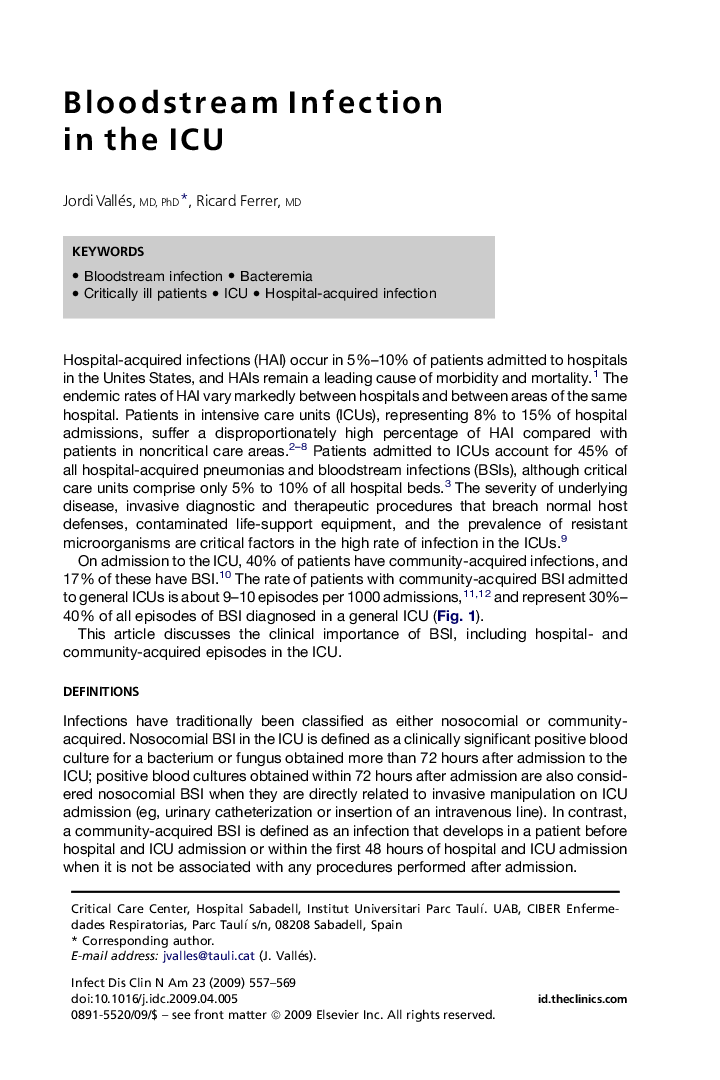| Article ID | Journal | Published Year | Pages | File Type |
|---|---|---|---|---|
| 3404401 | Infectious Disease Clinics of North America | 2009 | 13 Pages |
Abstract
Hospital-acquired infections (HAI) occur in 5%-10% of patients admitted to hospitals in the United States, and HAIs remain a leading cause of morbidity and mortality. Patients admitted to ICUs account for 45% of all hospital-acquired pneumonias and bloodstream infections (BSIs), although critical care units comprise only 5% to 10% of all hospital beds. The severity of underlying disease, invasive diagnostic and therapeutic procedures that breach normal host defenses, contaminated life-support equipment, and the prevalence of resistant microorganisms are critical factors in the high rate of infection in the ICUs. This article discusses the clinical importance of BSI, including hospital- and community-acquired episodes in the ICU.
Related Topics
Health Sciences
Medicine and Dentistry
Infectious Diseases
Authors
Jordi MD, PhD, Ricard MD,
